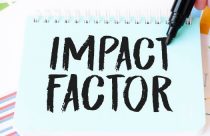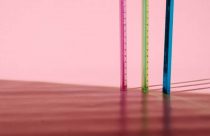How Does Eigenfactor Help in Evaluating a Journal’s Ranking

We all want to publish in internationally reputed scientific journals, those whose names bring instant respect and credibility. One measure of a journal’s importance is its “eigenfactor,” a rating devised by Jevin West and Carl Bergstrom at the University of Washington. The calculation is largely based on the total citations a journal receives over a five-year period. Therefore a big, fat journal that cranks out articles by the thousand will receive an eigenfactor twice as high as a thinner journal publishing half as many articles, so long as the articles have the same average citation rate. The citations are weighted, however, so that citations from highly regarded journals count more than those from low rated journals.
High Eigenfactor, Great Journal?
I logged onto the eigenfactor.org web site to check out the ratings of some of my favorite journals. The web page had a handy bar graph insert which showed at a glance that the Journal of the American Chemical Society and the Journal of Organic Chemistry have eigenfactors near the top of their categories, with JACS pegging the bar graph and JOC only showing a sliver of white. A drop down tab showed a five-year running average of the ratings, with a blue dotted line graph answering the question: is the journal rising or sinking in its eigenfactor rating? (JOC was declining; JACS was rising).
Mediocre Eigenfactor, Still a Great Journal?
In contrast, Propellants, Explosives, and Pyrotechnics received a mediocre eigenfactor rating, pushing the bar graph only halfway up. But anyone who specializes in propellants, explosives, or pyrotechnics does not consider PEP to be a mediocre journal. If you want to reach a researcher in the energetics area, there is no better journal. The PEP rating shows the value and the limitation of eigenfactor. It correctly judges JACS and JOC to have greater importance in the scientific community as a whole compared to PEP. The former journals publish much more articles, and their topics span the entire range of the scientific community in Chemistry (JACS) and Organic Chemistry (JOC). But this should not stop a researcher from publishing in PEP or any other specialist scientific journal. They are often the best venue to have maximum impact in a specific field.
How to Use an Eigenfactor Score?
Eigenfactor does have some uses. If you have a paper on a topic that doesn’t fit into one of your usual journals and you are trying to decide where to send it, a journal’s eigenfactor score might help narrow down the choices. However, it is recommended to still scan a recent issue of each potential journal before making a final decision. This will reveal more about the quality of the articles than the eigenfactor score.









